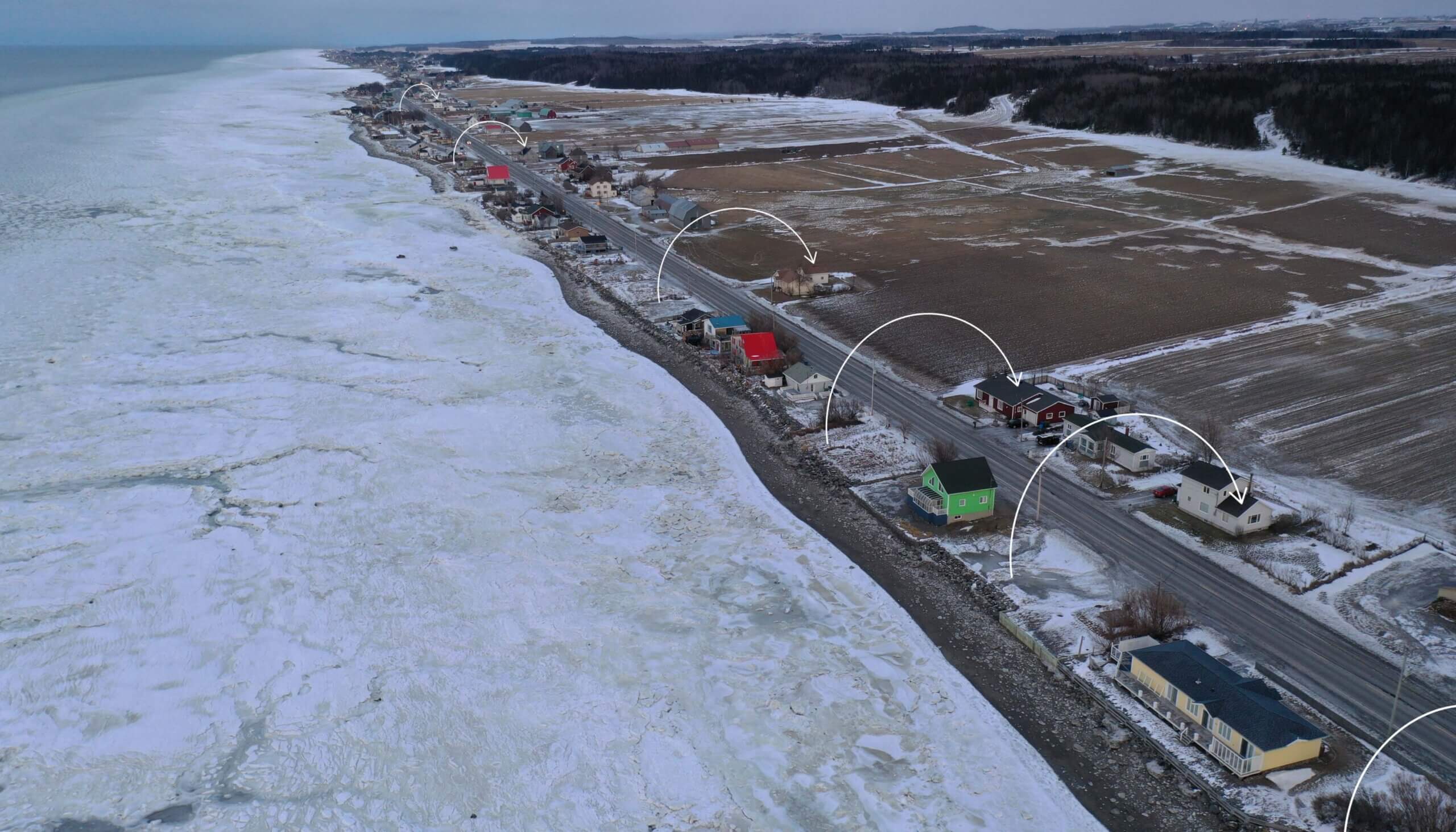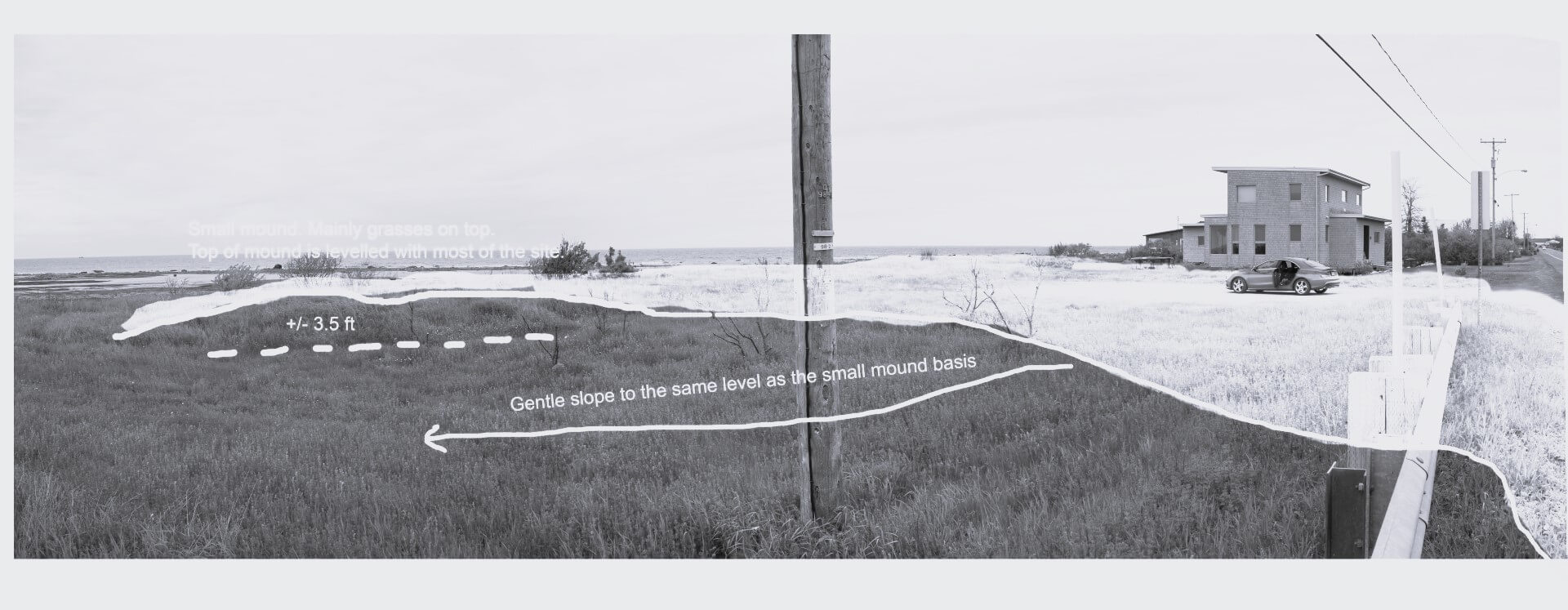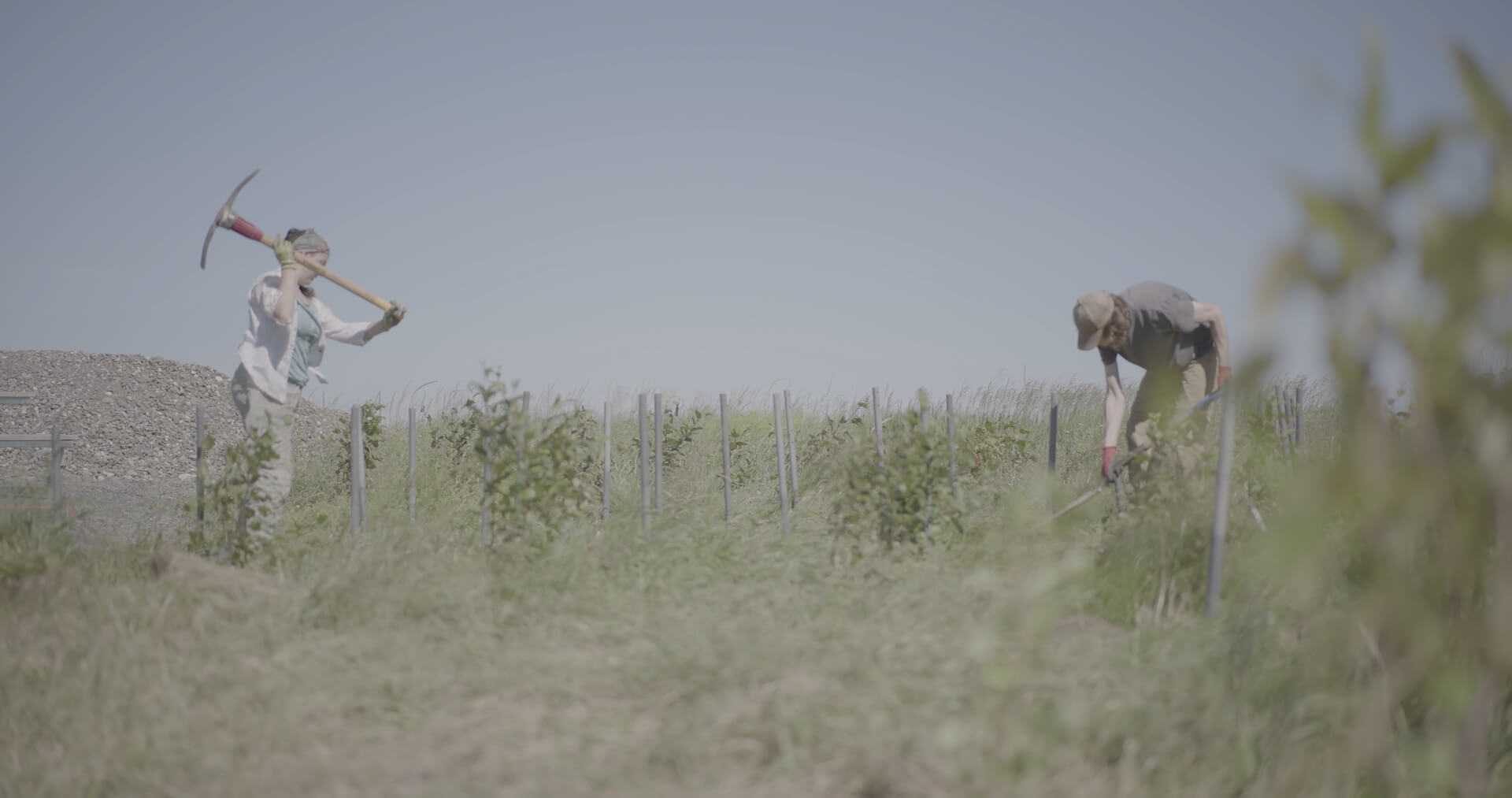Le Jardin de bord de mer
Ste-Flavie, Québec
In collaboration with Les Jardins de Métis and the municipality of Ste-Flavie.
Ste-Flavie, Québec
In collaboration with Les Jardins de Métis and the municipality of Ste-Flavie.
Part of the book Landscapes of Retreat [K. Verlag, Berlin]
Download: Handbook "How to grow a shoreline" (Download) (Print Booklet)
Awards: Annual Grant from the Landscape Architecture Canada Foundation
Read: Radio-Canada: "Studying Nepal's response to climate change… in Sainte-Flavie."
Read: Bloomberg: "Who Will Manage the US Climate Retreat?"
Download: Handbook "How to grow a shoreline" (Download) (Print Booklet)
Awards: Annual Grant from the Landscape Architecture Canada Foundation
Read: Radio-Canada: "Studying Nepal's response to climate change… in Sainte-Flavie."
Read: Bloomberg: "Who Will Manage the US Climate Retreat?"

This project addresses the retreat of communities away from the shoreline by valuing the land that is left behind. In particular, it addresses extreme shoreline erosion by relying on the adaptive capacity of plant life. Many shoreline plants modify their structure to changing conditions by strengthening their connection to the soil. In this way, Jardin de bord de mer celebrates change by transforming privately abandoned lots into vibrant public spaces. We envision the gardens as an inclusive fabric that transforms the entire shoreline and strengthens it for an uncertain future.
Accepting a transitional shoreline means understanding that the living environment is, in increasingly important ways, asking how to shape the shoreline rather than how to preserve it. Designing a series of shoreline gardens in lieu of restoring existing, fragile ecology forces a consideration of how the environment is valued and managed. In this case, deliberate species selection realizes the potential of plants to shape the environment, providing a foundation to develop a design that can be manipulated and measured alongside other, more typical construction materials. The pilot projects were completed with support from Fonds de solidarité FTQ and Telus.
Ce projet aborde l’exode des communautés du bord de mer en revalorisant les terrains qu’elles laissent en arrière, les « Landscapes of Retreat ». En particulier, il s’attaque à l’érosion extrême des berges en s’appuyant sur la capacité d’adaptation de la vie végétale. Plusieurs plantes du littoral adaptent leur structure aux conditions changeantes en renforçant leur connexion au sol. « Jardin de bord de mer» célèbre le changement en transformant des terrains privés abandonnés en lieux publics dynamiques. Nous imaginons un aménagement inclusif qui transforme tout le bord de mer et le renforce en vue d’un futur incertain.
Accepter un bord de mer en transition signifie comprendre que, de manière de plus en plus importante, l’environnement vivant qui nous entoure nous demande de savoir comment façonner le littoral plutôt que comment le préserver. Concevoir une série de forêts au lieu d’essayer de restaurer une écologie existante déjà fragile oblige à prendre en compte la manière dont l’environnement est valorisé et géré. Dans le cas présent, la sélection minutieuse et bien pesée des espèces végétales permet de tirer parti du potentiel des plantes pour façonner l’environnement, et sert de fondation à un design qui pourra être manipulé et mesuré en parallèle à d’autres matériaux de construction plus typiques.
Collaborators
Les Jardins de Métis
Municipality of Ste-Flavie
Fonds de solidarité FTQ
Telus
Landscape Architecture Canada Foundation
Catherine Auger
Emile Forest
Marie Pontais


This approach to shoreline management differs from typical mitigation work in three keyways: 1. It is a collaboration with plant life, prioritizing the use of plants rather than hard or gray infrastructure to manage shoreline erosion. 2. It exploits disturbance caused by frequent or intense storms to cultivate rhizomes from plant species with extended and interconnected root mass.3. It is time based, as upkeep is imagined through seasonal cycles of management so that the entire site can become more durable in the face of strong winds and erosive waves.
The initial shoreline gardens were completed over two years starting in 2022. Embedded in the pilot projects was an experiment using woody plants to protect from shoreline erosion. Woody plants in particular offer protection because their concealed root masses are similar to synthetic structural components, but because they are alive, they are adaptable to change and will expand below ground and grow into a coastal, partially underground, forest. In other words, the project spurs the growth of green infrastructure that actually performs and can become an adaptive model for other sites along the transitional shoreline.
The installation and care for Jardin de bord de mer was also a collaborative project. The sites were designed and installed by a team from Practice Landscape and Les Jardins de Métis in collaboration with the municipality of Sainte-Flavie, volunteers, and the generous support of Fonds de solidarité FTQ and Telus. Critically, the project prioritizes the reuse and repurposing of materials. Woody plants and grasses were planted in found and donated aggregate that help stabilize the soil. Beach stones that had been displaced from the shore and moved to a quarry were returned to the beach. Thicketing woody plants were located and transplanted by the team, and herbaceous plants were grown by Les Jardins de Métis in a special coastal nursery established to cultivate sea-spray tolerant plants.
The subsequent free manual, How to Grow a Shoreline, is based on our experience researching, designing, and installing Jardin de bord de mer and was funded by Landscape Architecture Canada Foundation. This manual is a ‘how-to” guide for managing shoreline and coastal erosion with plant life. Rather than a design prototype, a plan that is copied and pasted across sites regardless of local conditions, this manual describes principles and processes for initiating your own resilient shoreline garden





















